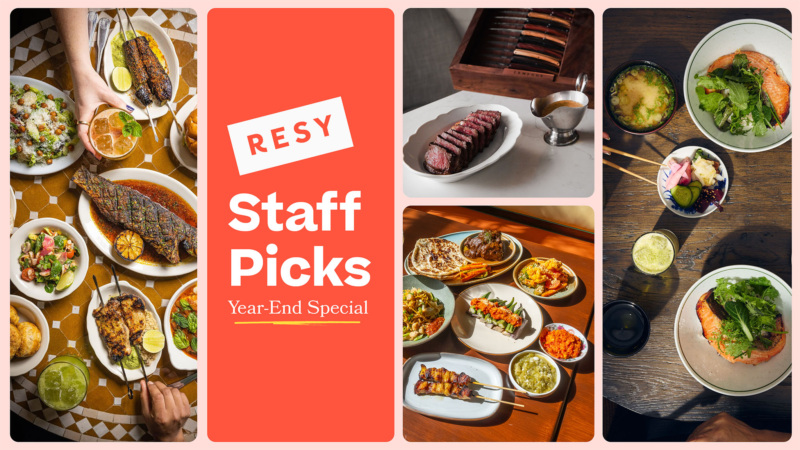
The Formosa Cafe is a Masterclass in Restoration
Like an aging Hollywood star, the Formosa Cafe’s light may have dimmed a bit over the years, but it never truly went out. The landmark restaurant and lounge, its green neon outside glowing like a beacon since 1939, is as much a part of Los Angeles as the movie business itself. But those red vinyl booths and decades of secrets were almost lost to development, bad renovations, and an ever-changing neighborhood. Yet in 2019, saviors Bobby Green and the 1933 Group dropped millions to breathe new life into the storied space, and in the process, created a blueprint on how to restore and revive a classic restaurant for modern times.
“Places like this were only built once; you can never build them again,” says Green.
The little red building with a train car attached has seen it all since its humble beginnings. Located across from Hollywood’s most venerable studio lots — then Pickford-Fairbanks and United Artists, which became Samuel Goldwyn, Warner Hollywood, and now The Lot — it was a nondescript lunch counter at first. Eventually the Formosa became a watering hole for everyone from stage hands to high-profile producers, writers, and actors.
There are more stories than there are black-and-white headshots lining the walls. The ghosts of Hollywood legends who hung out at the Formosa during its heyday — Ava Gardner, Frank Sinatra, Elvis Presley, Humphrey Bogart, John Wayne, Lauren Bacall, Lucille Ball, Clark Gable, and Marilyn Monroe — are all there. In the 1980s and 1990s, musicians were drawn to the Formosa’s old-school vibe; among them Bono, who once penned a poem about the Formosa on a bar napkin. Later years saw Tobey Maguire, Leonardo DiCaprio, Brad Pitt, Jon Favreau, and a whole new generation of up-and-comers lingering in booths and at the bar.
To help bring it back, Green worked closely with Vincent Jung, the grandson of Lem Quon, the former Formosa bartender who owned the place until he died in 1993. Quon, who spent nearly 50 years of his life at the Formosa, kept most of the original decor and ephemera, which Jung salvaged.
“It was all just sitting in a garage,” says Green. “We’re talking about family history, here, family legacy.”
Like many places of its time, the Formosa was originally built around a fantasy of exoticism that didn’t pay homage to any one region or time in particular. So the new regime made an effort to create a stronger connection between the restaurant and the influence that Asian Americans, and especially Chinese Americans, have had on film, television and radio — something that’s gone largely unrecognized for decades.
An exhibit titled “Hollywood Chinese at the Formosa,” curated by Oscar-nominated filmmaker and author Arthur Dong, includes sepia-toned photos of actors like Anna May Wong and directors like James Wong Howe, and photos and posters highlighting Chinese Westerns, crime dramas and musicals. It’s one of the most robust collections on the subject anywhere in L.A.
That perfect blend of old and new, the stories that live deep in the walls and the current ones yet to tell, make the place more cohesive than ever. After a full renovation and restoration, the main bar is a glorious ode to its past. The bright, shiny red vinyl booths are restored originals; the custom wallpaper is an amalgam of designs from Formosa’s past; and the new terrazzo floor tiles have the same shimmer as those on the Hollywood Walk of Fame. Underneath one booth is notorious gangster Bugsy Siegel’s floor safe, lit up in case someone needs to make a late-night drop.
Green took great pains to restore the 1904 train car, shedding its panels of dry-wall to showcase its original grandeur. But he also kept the space’s stories intact. In the back is a VIP and a carved bar from the famed Yee Mee Loo, an old watering hole in Chinatown.
There was always food at the Formosa, but with chef David Kuo overseeing the new menu, food is central. Inspired by the Taiwanese soul food Kuo makes at Little Fatty across town, there are bites like pork and shrimp-filled wontons in chile oil, General Tso cauliflower, and walnut shrimp.
Unfortunately, coronavirus mandates mean the dining rooms and bars are closed inside for now, but there’s al fresco dining on the rooftop patio, as well as seating around the building on the ground floor (Green had to move the Formosa rickshaw). Takeout is still available, including the cocktails, which are as popular as ever.
“It was a place for everyone, from tourists to celebrities,” Green says.” Our goal is to just keep it going…”
Lesley Balla is a food, drinks and travel writer. She has contributed to Los Angeles magazine, The Hollywood Reporter, The Seattle Times, and was the L.A. editor for Zagat and Eater in a previous life. Follow her on Twitter and Instagram. Follow Resy, too.
Discover More

Stephen Satterfield's Corner Table

















